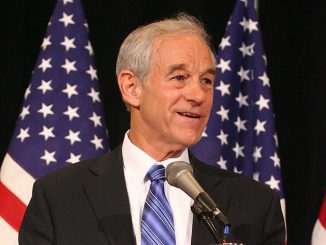There are two interviews of note hitting the wires today. One is with Richmond Federal Reserve President Dennis Lockhart, in which he leaves open the possibility of a September beginning to the tapering process. Via the Wall Street Journal:
Dennis Lockhart, in an interview with Market News International, published Tuesday, said that while a move to ease back on monetary stimulus could come in September, the move could come at any time before the end of the year. Mr. Lockhart, who is not a voting member of the Fed’s monetary policy setting committee, also cautioned that should gross domestic growth and job creation in the second half of the year disappoint, “I, for one, would be quite prepared to delay or even reconsider” removing the asset purchase program.
This is crazy. By the September meeting we have at best only the earliest data with which to judge the second half of the year. If you really need to evaluate the second half of the year, you need to wait until October at the earliest. September should be out of the question. But it clearly isn’t.
The next paragraph:
Mr. Lockhart said he was hoping for a bigger non-farms payroll figure in July — 162,000 — indicating that if the figure were to rise to between 180,000 to 200,000 and growth pick up, then the Fed would be in a position to taper.
This is equally crazy. Is Lockhart really saying that 18,000 jobs – out of an economy with 136 million jobs – is meaningful from a policy perspective? And notice the low expectations. We don’t even need 200,000 jobs any more to justify pulling back accommodation.
I was wondering if Lockhart is being taken out of context. He generally has a very balanced, considered view. But then we see the comments of Chicago Federal Reserve President and noted dove Charles Evans. Again, via the Wall Street Journal:
During a breakfast briefing with reporters Mr. Evans said, “I clearly would not rule that out,” when asked if the Fed might begin throttling back on its asset purchases at theFederal Reserve‘s Sept. 17-18 policy meeting….
…The Fed is “quite likely to reduce the flow purchase rate starting later this year,” Mr. Evans said. “I couldn’t tell you exactly which month that will be.”
Hence why we can’t take September off the table. If Evans thinks it is possible, then it must be very possible, despite only another month’s data between now and then.
Both appear to find the 7% mark significant:
“Considering the cumulative improvement in economic conditions since September 2012, Our asset purchases likely will end with the unemployment rate somewhere in the range of 7%,” Mr. Evans said, adding he expects this to happen sometime in 2014.
and
Mr. Lockhart said he expects the unemployment rate to fall to 7% in mid-2014.
This I don’t understand unless they expect labor force participation to surge. We have six months left in 2013 to reduce the unemployment rate by 0.4 percentage points. Less than a percentage point a month:
(click to enlarge)
7% just doesn’t seem like a high bar to cross by then end of 2013. Evans also highlights an argument to begin tapering sooner than later:
“Markets have begun to digest a world in which asset purchases are finite,” he said. He added that just because purchases might be scaled back, that doesn’t mean the Fed will raise interest rates, in fact, he said he sees rates remaining unchanged as long as inflation in kept in check, which could push unemployment below 7%.
The initial shock of tapering is behind us, giving the Fed more room to actually initiate the tapering. Tapering is the first step on the path to normalizing policy. The second step is making sure everyone is focused back on interest rates:
“Once we cross 6.5% [unemployment] we would be more closely monitoring” the information that informs the Fed funds rate, he said….
…“Suppose inflation were 1.5%. That’s much too low for our 2% target. Further accommodation would be called for,” he said, adding that he could even envision unemployment rates dropping “below 6% in certain environments.”
The more they believe they can hold rates in check even if they begin to tapering, then the more likely that tapering will be.
Bottom Line: I think the Fed very much wants to taper in September, and hence why I am wary to believe we need to see some significant acceleration in the data to push them in that direction.
- Bulenox: Get 45% to 91% OFF ... Use Discount Code: UNO
- Risk Our Money Not Yours | Get 50% to 90% OFF ... Use Discount Code: MMBVBKSM
Disclaimer: This page contains affiliate links. If you choose to make a purchase after clicking a link, we may receive a commission at no additional cost to you. Thank you for your support!





Leave a Reply